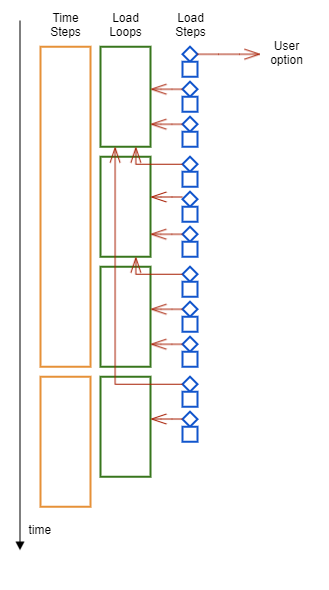Load Stepping
For cases with nonlinear geometry (large deformations) and nonlinear materials (plastic or hyperelastic solids), the governing equations can be highly nonlinear, causing the solution to diverge. To decrease the nonlinearity of the system and improve convergence, it is convenient to apply the external loads progressively over several steps.
Considering the static nonlinear problem:
With load stepping, Eqn. (4627) can be written as:
where the stepping factor accounts for the ramping of the load over the steps . Currently, Simcenter STAR-CCM+ uses the load loop approach. With this approach, the external load is split into parts which are incrementally applied in separate load steps. In each load step, the nonlinear sytem Eqn. (4627) is solved with the Newton-Raphson method:
Linear Load Stepping
- The first load step of the simulation, then the user-defined Initial load increment is used.
- The first load step of the time-step, then all load steps of the first load loop of the previous time-step are considered.
- The first load step of a load loop, then all load steps of the previous load loop are considered.
- A subsquent step of a load loop, then all load steps of the current load loop are considered.

At each load step the solver increments the load linearly using a least squares method: